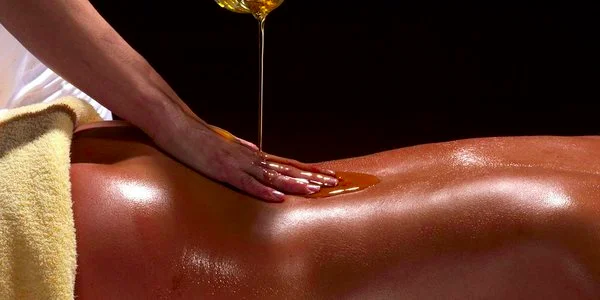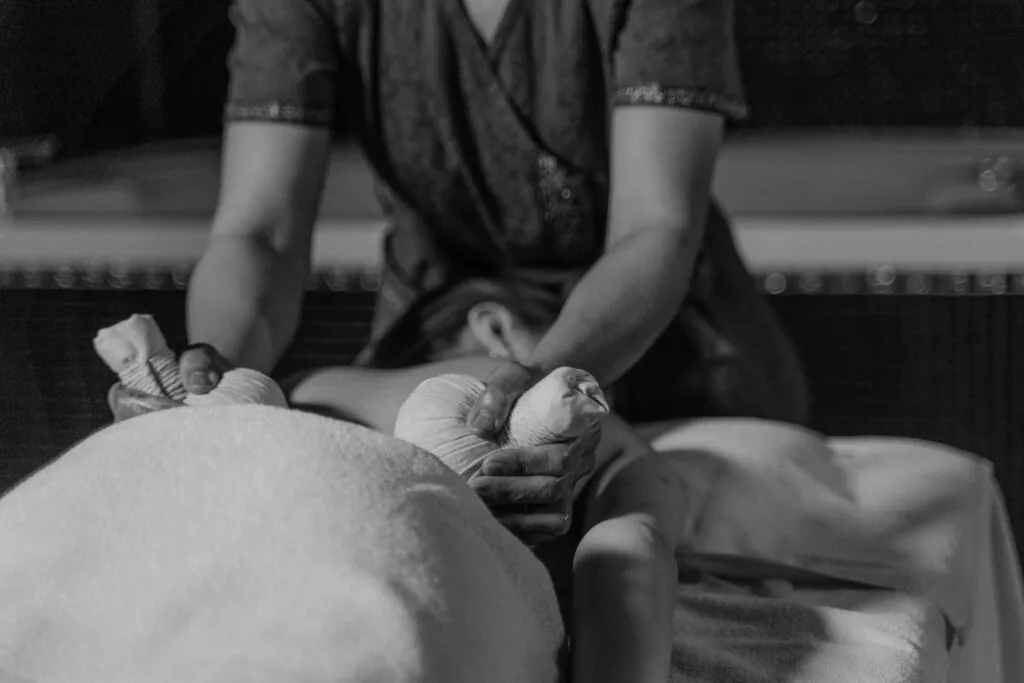Ajurveeda kogub populaarsust kogu maailmas ja seoses sellega on hakatud rohkem rääkima ka ajurveeda “imeteraapiast” panchakarmast. Panchakarma on sügava mõjuga puhastav, uuendav ja noorendav protseduur, kompleksne lähenemine tervise toetamisele ja taastamisele.
Sanskritikeelne sõna panchakarma tähendab viit tegevust või tegu, mille abil tasakaalustatakse organismisisesed loodusjõud ja luuakse eeldused füüsiliseks ja vaimseks tervenemiseks. Pehmete ja leebete kehaprotseduuride, kindla päevakava ja toitumisega on võimalik terveneda kroonilistest tervisehädadest ja muuta ebasobivaid mõtte- ja käitumismustreid.
Ajurveeda järgi tähendab tervis seisundit, kus kehasisesed loodujõud on tasakaalus, ainevahetus töötab korralikult, keha on terve ja meel rahulik. Hea tervis sõltub meie võimest töödelda ja seedida elu erinevaid tahke. Oluline on omandada see, mis meid emotsionaalselt ja füüsiliselt toidab ja väljutada ülejäänu. Kui me ei suuda täielikult seedida oma toitu, kogemusi ja emotsioone hakkavad meie organismis kuhjuma jäägid, mis “roiskudes” muutuvad mürgiks ja tekitavad haiguse. Panchakarma on elegantne teraapiate kompleks, mis väljutab kogunenud mürgid ja taastab organismi sünnipärase tervenemisvõime või leevendab kroonilise haiguse kulgu.

Panchakarma koosneb kolmest etapist: ettevalmistus, puhastusprotseduurid ja stabiliseerimine ehk protsessist väljumine.
Ettevalmistavas etapis pehmendatakse sisemisi ja väliseid kudesid ghee- (selitatud või ehk võiõli) ja õlimassaažiga. Hommikul tühja kõhu peale võetud ghee pehmendab seedekulgla seintele ladestunud mürgikihti ja jõuab ka organismi sügavamate kudedeni valmistades organismi ette mürkide väljutamiseks. Välispidiselt toetatakse protsessi spetsiaalse õlimassaažiga. Seejärel toimub mürkide väljutamine seedetraktist kõhulahtisust põhjustavate taimede abil ja pehmetest kudedest higistamise teel.
Teises etapis väljutatakse spetsiaalsete kliiniliste tehnikatega ülemäärased, taskaaluseisundist väljas olevad organismisisesed loodusjõud: Vata, Pitta ja Kapha, mis põhjustavad haigusseisundeid.
Kolmandas etapis toimub organismi stabiliseerimine ja seedetule taastamine, kus oluline roll on toitumisel, joogal, meditatsioonil ning korrapärasel päevakaval ja eluviisil.
Õigesti tehtud panchakarma on võimas tervendav protseduur. Kindlad protseduurireeglid on väga olulised ja neid mitte järgides võib panchakarma kasu asemel kahju tuua. Seetõttu tehakse panchakarmat spetsiaalses kliinikus kolm-neli nädalat kontrollitud ja hoitud keskkonnas. Indias ja mujal Aasias on panchakarma kliinikute tase väga erinev. Seetõttu soovitan enne koha reserveerimist kindlasti uurida tausta ja vahet teha wellness ja kliinilise suunitlusega asutusel. Terviklikult tehtuna hõlmab panchakarma alati ka teraapilist toitumist, meditatsiooni ja joogat.
Olen läbinud kuuajalise panchakarma Indias kolmel järjestikusel aastal. Esimesel korral soovisin tõsta oma immuunsust. Olin just lõpetanud ajurveeda praktiku kaheaastase õppeprogrammi ja praktiseerinud Indias kõiki “töövõtteid”. Tulemused hämmastasid mind kui psühholoogi. Pehmed kehaprotseduurid olid enamjaolt meeldivad, kuid sügavad. Tajusin kogu panchakarma protsessi kui intensiivset psühhoteraapiat. Vabanesid hangunud emotsioonid, mõtte- ja suhtemustrid. Kogesin omal nahal, et keha tervenemisega, tervenevad minevik ja suhteid ning koged loomulikult ja rahulikult olemuslikku spirituaalsust. Inimese enda keha on tema kõige suurem õpetaja ja ka spirituaalne teejuht.
Teisel ja kolmandal korral käisin panchakarmat tegemas koos oma lapsega, kellel diagnoositi degeneratiivne närvihaigus. Kahe panchakarmaga õnnestus haiguse kulg pöörata ja negatiivsed mõtted helgete vastu vahetada.
Indias panchakarmat tehes on kasu sellest, kui oskad võimalikult täpselt küsida, mida soovid. Seetõttu võivad mõningased eelteadmised panchakarmast olulised olla. Näiteks mina soovisin läbida programmiväliselt silmade noorendus- või uuendusteraapia, mille positiivset mõju tunnen siiani.
Panchakarmat on mõtet võtta kui põnevat reisi iseenda sisse ja mitte kui ühte atraktsiooni turismireisil. Kui sa tahad samale reisile planeerida kohalike vaatamisväärsustega tutvumist, siis oleks seda parem teha enne panchakarmat. Ghee võtmise ja intensiivsemate protseduuride päevadel ei ole üldjuhul lubatud kliinikust lahkuda, kuid stabiliseerimise etapis võib käia väljas, kui söögiaegadest kinni pead.
Panchakarma – nagu ajurveeda üldiselt – toimib ülipehmelt, peaaegu märkamatult. Õige tulemus on see, kui sa ühel hetkel märkad, et ohhoo, seda probleemi mul enam polegi, aga millal täpselt muutus toimus, ei ole võimalik öelda. Toimunud muutus jääb püsima. Kõige õigem on panchakarma esmast mõju hinnata kolme – nelja kuu pärast, kui oled taas kohanenud oma tavakeskkonnas ja otsas on kliinikust kaasa antud taimepreparaatide varu.
Paljudel ei pruugi olla võimalust sõita kuuks ajaks Indiasse, sest see on kulukas ja aeganõudev. Ometi sooviks organismi leebelt ja armastavalt tervendada ja turgutada. Õnneks on olemas ka lihtsam lahendus nn. koduse panchakarma (home panchakarma) näol, mida viiakse läbi vähem reglementeeritud tingimustes. Kodune panchakarma on turvaline protseduur, kuid ka siin peab täpselt järgima instruktsioone. Ka koduses panchakarmas kasutatakse organismi sisemiseks puhastamiseks gheed ning mürkide väljutamine toimub higistamise ja ravimtaimedega ajutise kõhulahtisuse esilekutsumise teel. Keerulisi kliinilisi protseduure ette ei võeta ja sisemiste loodusjõudude tasakaalustamine toimub kindla päevakava, monodieedi, pranayama (joogahingamine), meditatsiooni, massaži ja jooga abil. Kodune panchakarma on hea võimalus puhastada sügavalt ja pehmelt oma organismi ning seeläbi suurendada võimet kuulata oma keha. Olgu kliinikus läbiviiduna või kodus, panchakarma tähendab aja võtmist enesevaatluseks ja lõõgastumiseks, et mõtiskleda, mediteerida, puhastada meelt, keha ja vaimu. Oluline on veeta aega looduses ja vältida liigset stimulatsiooni nagu televiisor, arvutiekraan või raske füüsiline koormus.
Tasub teada, et kutsudes esile mürkide väljutamise, aeglustuvad seedeprotsessid oluliselt või hakkavad isegi vastupidi tööle. Sidekoe puhastumisel vabanevad sinna kogunenud emotsioonid ja see võib põhjustada taju ebaadekvaatsust, emotsionaalset ebastabiilsust või intensiivseid emotsioone. Seepärast on hea, kui konsulteerid enne ja vajadusel ka protsessi jooksul ajurveeda praktikuga, et kõik kulgeks mõnusalt.
Samuti on hea, kui on võimalust kogeda kodust panchakarmat väikeses juhendatud grupis toetatud keskkonnas väljaspool argiaskeldusi. Olles omandanud tehnikad ja kogenud protsessi, on hiljem juba kindlam tunne seda kodus omaette teha.
Olen teinud kodust panchakarmat nii üksi kui väikese grupiga ja kogenud, et ka sellisel lihtsamal viisil tehtud panchakarma on tõhus ja sügav. Koduse panchakarma tulemusena lähevad paika sinu elurütm ja söögiportsud ning kaob magusaisu. Sa õpid vahet tegema keha vajadustel ja meele isudel. Hommikul ärkad väljapuhanuna, rõõmsameelse ja teotahtelisena. Kinnistub loomulik vajadus ennast füüsiliselt liigutada. Elu on ilus ja inimesed armastusväärsed. Sinu sees on armastus, rahu ja usaldus elu suhtes.

